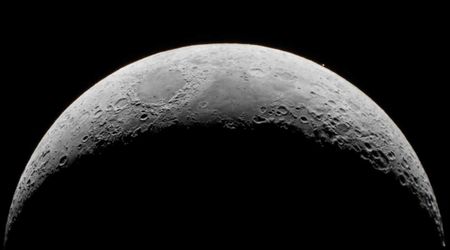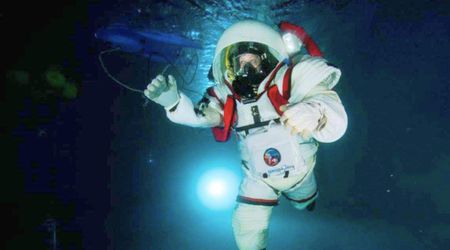Analog Astronauts

Many of us have gazed at the stars and dreamt of becoming an astronaut. But imagine embarking on a space-like mission without leaving Earth and without the inherent risks of cosmic travel.
Dive into the world of analog astronauts, where terrestrial missions mirror the challenges of cosmic exploration, offering invaluable insights without leaving Earth.
What is an analog astronaut?
While the exact definition will vary, an analog astronaut is someone who plays the role of an astronaut during a simulated crew mission. As an example, they won’t go to Mars for six months, but they may spend up to six months doing aspects of or even the same mission here on Earth to test out various scenarios and prepare the actual astronauts for potential problems.
Space agencies, private entities, and research organizations like NASA, the Analog Astronaut Training Center, InnovaSpace, and LunAres host analog missions that allow them to investigate one or more aspects of crewed space missions here on Earth in similar environments as an analog.
These scientific simulations help provide researchers with near-enough conditions for testing or studying various aspects of a proposed space mission in a much more controlled environment. Each analog mission will have different requirements, design parameters, and conditions.
Many are done multiple times with various participants to help provide as much data as possible. They are also particularly useful for technology developers to achieve or at least make progress toward the Technology Readiness Level required by NASA for their technology to be considered for a mission. They help researchers understand (with actionable, analogous data!) the strengths, limitations, and validity of potential missions.
Analog missions are completed in analog habitats which are specifically designed to create simulations for research purposes. Many of these habitats have specific focuses such as the LunAres Research Station which specializes in testing isolation and EVA procedures.
Many analog habitats use the extreme environments of deserts, the north or south poles, underwater, and volcanoes to simulate space missions with certain rules such as a spacesuit and mandatory depressurization period required to go outside the habitat to simulate the same conditions in space or on another planet.
There is a growing international community of analog astronauts, even professional conferences, to help these individuals network and focus on helping prepare humanity for crewed space exploration.

What do analog astronauts do?
Again, this is highly dependent on the individual analog mission, but analog astronauts are often tasked with undergoing a variety of activities and experiments that can be quite challenging and exhausting or even boring and trivial on the other side of the scale to help researchers understand how people and technology will function on a space mission.
The social and interpersonal aspects of space travel are some of the hardest and yet least publicized potential issues of a mission. Living with five other people in tight quarters (with often no way to “escape” like going outside for a walk) with limited resources can become difficult at times, especially over the span of a longer-term mission.
In fact, many astronauts have stated they would rather have been sent into space alone because it’s simpler than dealing with the various issues that arise in a situation very similar to having to share a room with your sibling or a college roommate that you don’t see eye to eye with.
NASA lists some of the tests that they perform:
“new technologies, robotic equipment, vehicles, habitats, communications, power generation, mobility, infrastructure, and storage. Behavioral effects – such as isolation and confinement, team dynamics, menu fatigue, and others are also observed.” NASA What are analog missions
While it might sound glamorous, a lot of the research studies may not be what you expect and are much more challenging in ways you’d never expect. NASA, from the start of the space program, has enrolled volunteers and paid research participants to help them test all manner of aspects of space life.
Some were isolated in small rooms to review the food NASA was developing over periods of time analogous with various space missions as there is a huge difference between eating something for a day or two versus eating it for weeks or even months. Much of the early food designed for space was rough, mainly designed for nutrition and expected issues in space rather than palatability.
They also test the body’s reaction to different environments such as being prone (lying in bed) for prolonged periods of weeks or months.
Some analog missions particularly focus on the dangers of space by testing potential safeguards against the following concerns:
- Space radiation
- Isolation/ confinement
- Distance from Earth
- Gravity Fields
- Hostile/ closed environments
You can find a full list of the types of NASA Analog Missions on their website.

How do you become an analog astronaut?
It’s actually easier than you might expect. Space agencies, private space companies, and research institutions are often looking for analog astronauts to investigate proposed technology or the impact of a mission on human astronauts.
For instance, LunAres simply requires you to be older than 20, healthy, and have no contagious diseases. They welcome people from all walks of life, listing the wide array of potential candidates including students, artists, researchers, adventurers, travelers, engineers, retired individuals, those with different physical abilities or imparities, and really almost anyone.” Remember, this is research, not astronaut training even if you may be testing some of those aspects.
In general, NASA looks for healthy, non-smoking volunteers, aged 30-55 who pass a physical and psychological assessment. You can check out their current calls for Analog Test Subjects on their website. Each opportunity lists out the test duration, the size of the crew, the location, what they will be testing, and any particular requirements for the study.
In fact, the biggest barrier to becoming an analog astronaut is your location and your own willingness to participate in a particular mission.
The opportunities available range greatly, so it is important to look at options before deciding which to take on. Many require you to find and fund your way to the location headquarters, some are volunteer positions, while others are paid or compensated in a variety of ways.
You likely won’t be able to make a living off just being an analog astronaut, but it’s an amazing opportunity to contribute to space exploration and potentially go through some of the exact motions a future astronaut will.
Conclusion
While they may not receive as much press astronauts, analog astronauts provide integral data to help astronauts and other space exploration professionals do their jobs, with much less of the risks of actually going to space.
They perform a variety of duties, many much less glamorous or exciting than you might expect, which help us test technology, mission parameters, and safety all in a controlled simulated environment here on Earth before asking astronauts in space to do the same.
The best part is that if you are interested, you probably qualify for at least one analog mission available.
Further Reading:
In the following article, Samantha Falcucci shares her experience of being an analog astronaut for a 10-day mission: "Simulating a Space Mission Prepared Me for Life on Mars and on Earth"
























